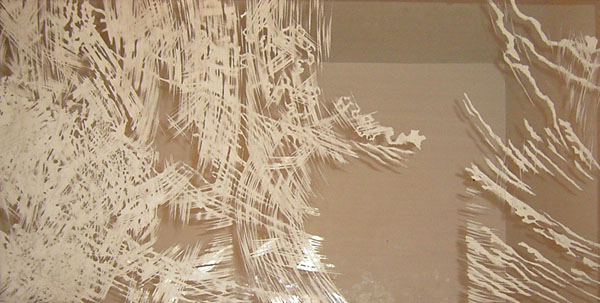
White Picture Series - Erasing Hokusai
at Artist Space, SOHO in New York "Salad Days" July 12 - August 4, 2006
Artist: Kosuke Ikeda
Curated by Shinya Watanabe

Opening Reception: Tuesday, July 11, 6 - 8pm
Salad Potluck Party: Public events with the artists and curators
Wednesday July 19, 6- 8pm at Artists Space
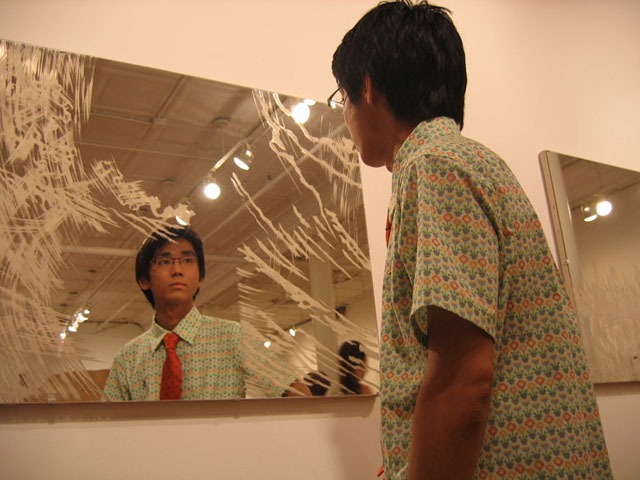
Opening Photos
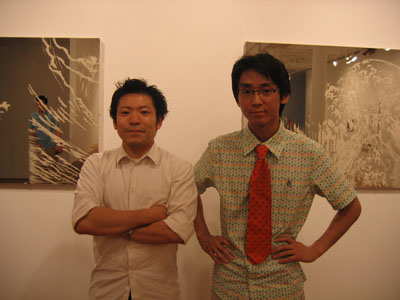 |
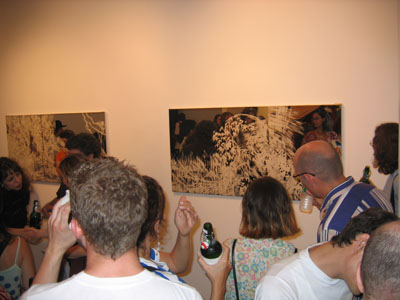 |
|---|---|
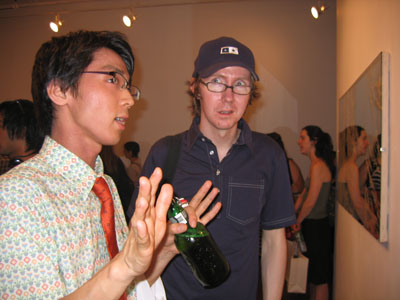 |
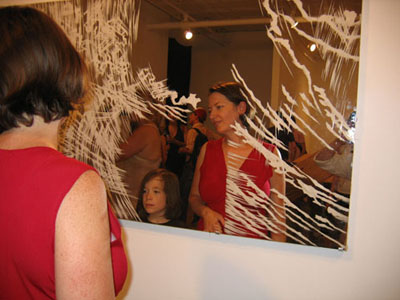 |
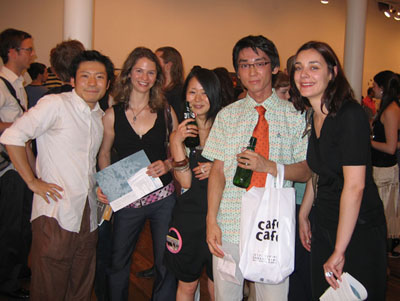 |
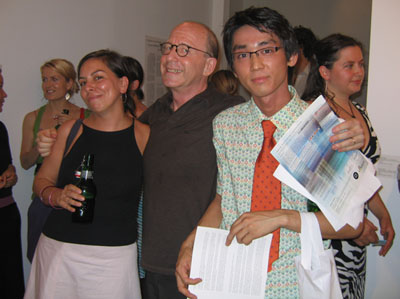 |
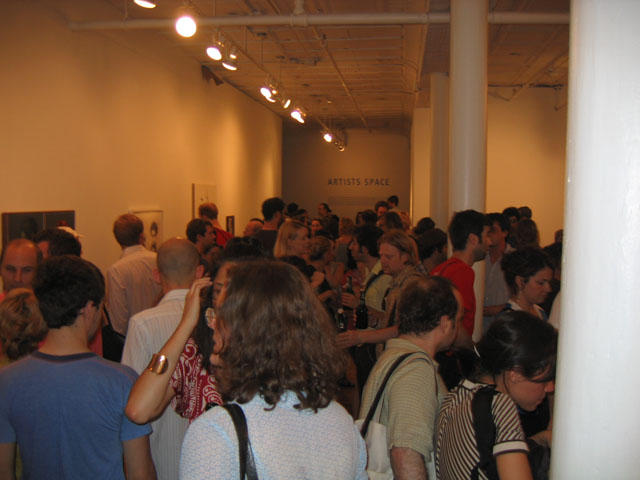
White Picture Series
by Kosuke Ikeda
A painting has been historically likened to a window. As a viewer stands before the painting, s/he can feel as if a certain space is spreading behind it. It is a flat plane, but it also has a certain space. Likewise, a painting can be compared to a mirror which is a two-dimensional plane reflecting a three-dimensional environment. Numerous artists gravitate to the mirror as a motif, which symbolizes perfect representation of reflection.
One series of my works is the WHITE PICTURE SERIES, which were made by means of a specific technique. If you scratch the back side of a mirror, the scratched parts become transparent, mere glass, and then you can join the scratched mirror and a piece of plain canvas on which nothing is painted. On the scratched part, the viewer can see the white canvas through the glass, while on the unscratched part, the mirror reflects the viewer him/herself or the surrounding.
This work has these mirrors and canvases, in other words, 3-dimensional parts and 2-dimensional parts. Therefore, the viewer will perceive two opposite feelings; s/he can perceive a certain space through the mirror, but at the same time, s/he cannot turn her/his eyes away from the flat canvas.
According to Gestalt psychology, people can never perceive a figure and the ground of the image at one time. That is, we cannot look at a figure when we are looking at the ground behind it, and we cannot look at the ground when we are looking at the figure in front of it. Similarly, with my works, viewers cannot grasp these parts, the mirror and the canvas at one time; they nevertheless are on the same surface. Thus, I could say that the viewer cannot help perceiving two opposite impressions, or more precisely, will be coming and going convulsively between two directly opposite feelings.
Kosuke Ikeda's White Picture and the Sublimity of Nature in Different Dimensions
by Shinya Watanabe (Independent Curator of Spiky Art)
Ikeda is particularly interested in the issues of modern perception and sublimity. In his work, he has created a unique meeting point of these issues in the conjunction of modern Western painting and traditional Japanese printing. Ikeda's White Picture Series is a work in which the artist scratches the reverse side of mirrors. For this exhibition, Ikeda created a new series of White Pictures by using images of Hokusai's masterpieces, such as the white wave from Fugaku Sanjyu Rokkei (36 Scenes of Mt. Fuji).
Hokusai's nearly exact contemporary was the English painter J.M.W. Turner. These two artists lived in completely different cultural surroundings; they nevertheless shared the same interest--the sublimity of nature.
Of course, Hokusaifs sense of nature's sublimity is different from Turner's. In Hokusai's flat, two-dimensional prints, the scenery of the cascading wave and Mt. Fuji clearly shows his interest toward expressing the sublimity of nature. This imaginary scenery was born of an imaginary perspective, something quite new for European painters in the nineteenth century. On the other hand, Turnerfs sublimity of nature is clearly meant to create the illusions of three-dimensional space, a sense of space that became possible after the industrial revolution.
Ikedafs White Picture is a series of paintings that are created by the process of erasing the original image. This erasing process (i.e., the scratching of the mirror) reveals not the reflective mirror parts but its non-reflective parts, which are directly incorporated into the non-painted white canvas. In Ikedafs White Picture, the unscratched parts contain mirror parts, and their reflections create the illusion of three-dimensional space. Such an illusion creates conflict with two-dimensional scratched parts on the canvas. This conflict highlights the "thing-ness" of the non-painted canvas itself: what a viewer sees is a mere canvas, which loses its status as image; this flat surface resists sublimity. Here, the act of tracing and erasing is perceived as a struggle on the boundary between image and object.
About the Exhibition "Salad Days", please go to Artist Space Website
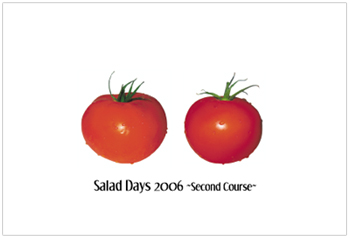
12 Curators
Stacey Allan
Yaelle Amir
Tairone Bastien
Naomi Beckwith
Anna Gray
Matthew Lusk
Anthony Marcellini
Courtney J. Martin
Amie Scally
Elisabeth Schneider
Shinya Watanabe
Hillary Wiedemann
Select 12 Artists
Ronnie Bass
Amy Westpfahl
Mamiko Otsubo
Carla Edwards
Fay Ray
Lara Kohl
Mauricio Guillen
Ania Soliman
Philip Maysles
*
Kosuke Ikeda
Chris Taylor
Organized by Jennifer Moon and Hillary Wiedemann